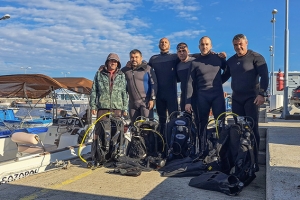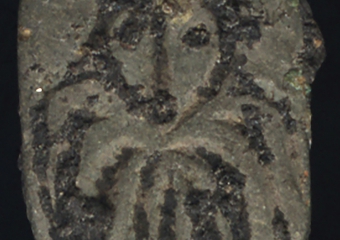An underwater expedition of the National Museum of History explored the ancient port of the fortress of Chrysosotatira in the Sozopol Bay
 The underwater archaeological expedition of the National Museum of History, under the leadership of Prof. Dr. Ivan Hristov, was held in the first half of September 2024 in the western part of the Sozopol Bay. The studies are funded by the Ministry of Culture. They also included geophysical surveys carried out by Eng. Kiril Velkovski with specialized equipment from the Center of Underwater Archaeology. The actual underwater work was carried out by a team of 5 divers working in 4 separate zones in the southern and southwestern water areas of the Chrysosotira peninsula. An area with an approximate area of 70000 sq m was examined. During the inspection, an area saturated with numerous whole and fragmented late antique amphorae, as well as individual fragments of other ceramic vessels, was mapped. Amphorae of type LR1, LR2, Samos Cistern Type and North African amphorae have been documented. Their dating is V-VII century. The vessels were found on the sandy bottom, partially buried with sand, at a depth of 6 to 10 m.
The underwater archaeological expedition of the National Museum of History, under the leadership of Prof. Dr. Ivan Hristov, was held in the first half of September 2024 in the western part of the Sozopol Bay. The studies are funded by the Ministry of Culture. They also included geophysical surveys carried out by Eng. Kiril Velkovski with specialized equipment from the Center of Underwater Archaeology. The actual underwater work was carried out by a team of 5 divers working in 4 separate zones in the southern and southwestern water areas of the Chrysosotira peninsula. An area with an approximate area of 70000 sq m was examined. During the inspection, an area saturated with numerous whole and fragmented late antique amphorae, as well as individual fragments of other ceramic vessels, was mapped. Amphorae of type LR1, LR2, Samos Cistern Type and North African amphorae have been documented. Their dating is V-VII century. The vessels were found on the sandy bottom, partially buried with sand, at a depth of 6 to 10 m.
During the inspections, fragments of medieval amphorae of type Gunsenen 2A (X-XI century), Gunsen 3 (end of XII-XIII century) were also found; late medieval ceramic vessels (XVII-XVIII centuries) and a late medieval iron combat knife. Marked on the archaeological map, they show a kind of port accumulation related to loading and unloading activities in one of the quietest parts of the Sozopol Bay. It is part of the port area of the late antique fortress of Chrysosotira, studied for 10 years (2014-2023) with funds from the Ministry of Culture and the National Museum of History.
The fortress on the peninsula, in the area of Chervenka, is one of the largest in the region of the Burgas Bay. It covers an area of 80 acres and fortress walls, towers, more than 30 buildings and facilities have been discovered in it. It is a kind of small town, but there is a hypothesis that it is also a suburb of the late antique Sozopol.
The existence of a suspected port zone in the water area of the Chrysosotyra Peninsula can also be drawn from written sources, the most circumstantial in this respect being the report of Count Tolstoy from the beginning of the 18th century.
In all likelihood, the ancient port was located in the leeward southwest side of the Chrysosotira peninsula, but specific data were lacking for it until now, when the first underwater expedition by the NIM was carried out. In addition to being a port of the late antique fortress, it could be considered as part of the search for a "second major port" of Sozopol.
The most valuable findings from the research will be exhibited in a temporary exhibition in the halls of the NIM in December 2024.


Comments
comments powered by Disqus